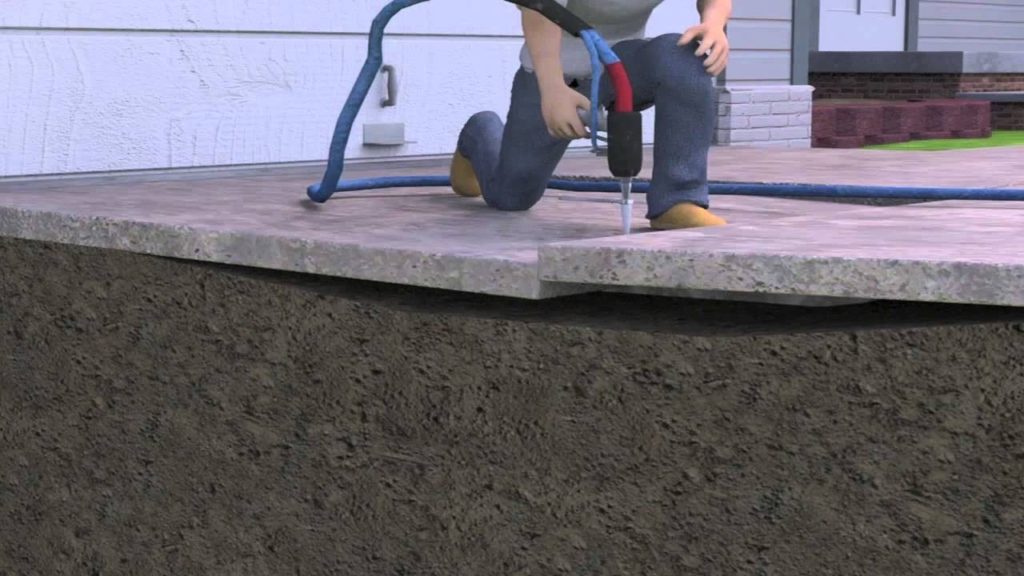Concrete is one of the world’s most popular building materials. It is strong, durable and very cost-effective which is why it is commonly used for constructing driveways, patios and sidewalks.
However, despite its durability, concrete doesn’t stay in good condition forever. Whether it is due to poor construction or water intrusion, this building material can sink, crack, crumble and chip over time. In fact, aged concrete is prone to all kinds of damage, making it unpleasant to look at and even posing as a dangerous tripping hazard.
Fortunately, restoring concrete is a very easy repair job. Trusted contractors have a few concrete raising options available to fix the material and make it as good as new. Each option comes with its own benefits and drawbacks so choosing the right one depends on several factors.
Whatever the case may be, here are three simple methods on how to raise concrete.
Polyurethane foam
One of the preferred concrete repair methods is polyurethane foam injection. This is a rather modern solution that involves lifting and raising settled concrete by injecting high-density polyurethane foam under the material, where it expands and pushes it back into place.
The process starts with drilling penny-sized holes into the slab. Next, the polyurethane foam is sprayed through the holes, filling all the voids below the concrete. The foam expands up to several inches in each injection hole, raising the concrete and filling any left-over gaps between the material and the soil. Finally, the gaps are then patched with cement.
This method is mostly used for restoring large and heavy slabs, like in roadways, and it takes little time to dry. Its biggest advantage is that it is a long-lasting solution as opposed to other repairing methods and it doesn’t allow the concrete to break down over time.
Mud-jacking
Mud-jacking is a traditional concrete repair method that also lifts sunken or settled concrete. The process involves drilling holes into the slab and then filling them with cement and/or mud in an attempt to raise the sunken slab. This solution is less expensive than the polyurethane concrete raising option, so it is the preferred choice if you are on a tight budget.
Despite this, mud-jacking comes with a few drawbacks. First off, it has a shorter lifespan compared to poly jacking because the materials used to fill the holes will eventually lose density. Secondly, the fill is a lot heavier which can create more of a burden on the soil and lead to further settlement.
Lastly, mud-jacking is very invasive. This is because the process requires pressure to fill the holes, so there is a great chance of a blowout which can make a large mess that is very difficult to clean up.
Concrete replacement
If the concrete in your driveway or sidewalk has cracked dramatically or deteriorated, then there is a third option you could consider for restoring it and that is a concrete replacement. The process involves completely removing the existing concrete slabs using heavy-duty equipment such as jackhammers, backhoes and skid steer and replacing them with new concrete.
However, this can be a very invasive and intensive procedure because you will be using heavy machinery that can cause major damage to your landscaping and lawn.
Besides that, concrete replacement doesn’t really address the real issue at hand and that is the weak soil. Such soil that is underneath the concrete is actually the main reason why your slab is sinking or cracking. So, if you choose to go with a concrete replacement, your new concrete slab will continue to sink like your old one.
Therefore, your best option is to opt for concrete repair rather than replacement.

Final thoughts
Although concrete is one of the strongest, most durable and economical building materials in the world, its biggest drawback is that it doesn’t stay in good condition forever. Just like other materials, concrete can get damaged over time for a variety of reasons, so it will require repair in order to become as good as new.
Fortunately, there are three solutions on how to restore settled concrete, each coming with its own pros and cons. All you have to do is consider the circumstances of your current concrete slab situation and choose the repair method that best fits your needs.






